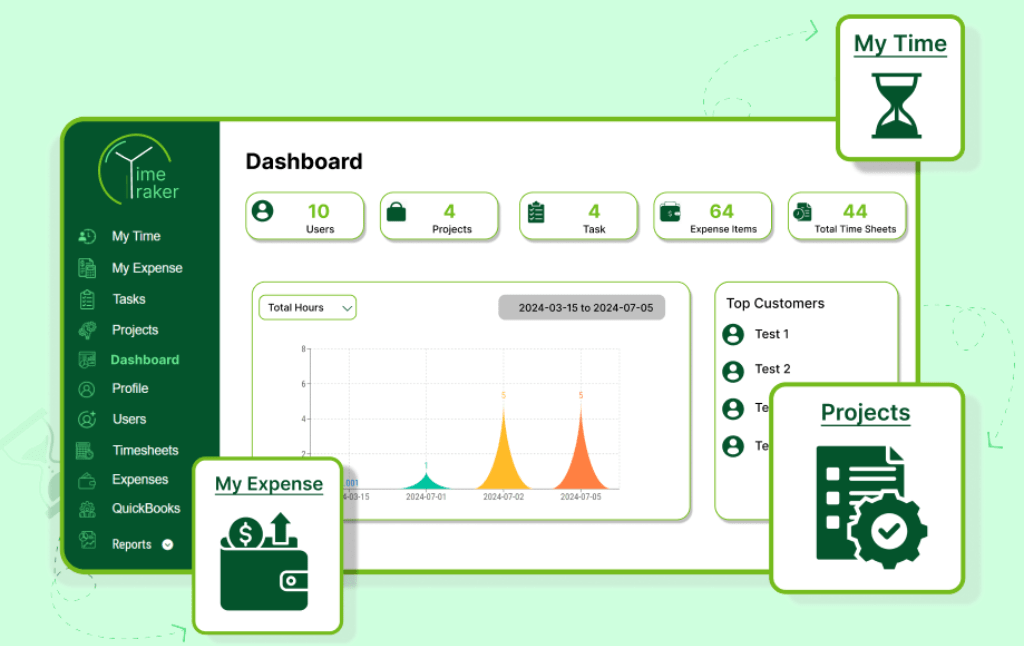
In today’s fast-paced work environment, boosting employee productivity is crucial for business success. One effective way to enhance productivity is through precise and efficient time tracking. Time tracking not only helps manage work hours but also provides valuable insights into how employees spend their time, leading to more informed decisions and better productivity management. In this article, we will explore how time tracking can significantly boost employee productivity, focusing on how Time Traker simplifies and enhances the process.
The Role of Time Tracking in Enhancing Employee Productivity
Why Time Tracking Matters for Employee Productivity
Effective employee productivity management starts with understanding where time is spent. Time tracking provides a clear picture of work patterns, allowing managers to identify inefficiencies and areas for improvement. By tracking hours worked and tasks completed, businesses can ensure that employees focus on high-value activities and optimize their workflow.
Benefits of Time Tracking for Employee Productivity
- Improved Time Management: Employees gain better control over their schedules by setting clear goals and deadlines based on tracked data. This leads to enhanced focus and reduced procrastination.
- Enhanced Accountability: Time tracking promotes accountability by offering a transparent view of how time is allocated and utilized. Employees are more likely to stay engaged when they see the direct impact of their efforts.
- Informed Decision-Making: Managers can use time tracking data to make informed decisions about resource allocation and project prioritization, leading to more effective team management and project outcomes.
How Time Traker Can Boost Employee Productivity
Effortless Time Tracking with Time Traker

Time Traker offers an effortless solution for time tracking, seamlessly integrating with QuickBooks Online to enhance employee productivity. This integration allows for real-time updates, simplifying time management for both employees and managers.
- Integration with QuickBooks in Real-Time: Time Traker’s real-time integration with QuickBooks Online ensures that time data is accurately reflected in your accounting system within seconds. This reduces manual data entry and minimizes errors, streamlining financial processes.
- Easy Timesheet Entry: With Time Traker, creating invoices from timesheets is straightforward. Employees can easily generate and submit timesheets to QuickBooks, simplifying payroll and reducing administrative overhead.
Expense Tracking and Management
Managing expenses efficiently is crucial for maintaining employee productivity. Time Traker simplifies expense tracking by allowing users to monitor both reimbursable and corporate credit card expenses.
- Expense Tracking: Time Traker provides tools to track and categorize expenses incurred by your team, whether online or through mobile devices. This integration with QuickBooks ensures accurate expense reporting and management.
Detailed Reporting and Analytics

Understanding time utilization through detailed reporting can drive improvements in employee productivity. Time Traker offers powerful, customizable reporting capabilities to analyze time data comprehensively.
- Customizable Reporting: Set targets or budgets for individuals, teams, or clients, and monitor real-time progress as time is logged. This detailed insight helps in setting realistic goals, tracking performance, and making necessary adjustments.
- Analytics for Productivity: Utilize analytics to identify trends and areas where productivity can be improved. Detailed reports allow managers to make data-driven decisions that enhance overall team performance.
Implementing Time Tracking for Maximum Productivity
Setting Up Time Tracking
To maximize employee productivity, implementing a time tracking system that integrates seamlessly with your existing tools and processes is essential. Here’s how to get started with Time Traker:
- Integration Setup: Connect Time Traker with QuickBooks Online to ensure smooth data flow and minimize manual input. This integration provides a unified platform for managing time and financial data.
- Training and Adoption: Educate your team on using time tracking tools effectively. Provide training on best practices for accurate data entry and utilization. Encourage regular use of the system to ensure consistency and accuracy.
- Regular Review: Regularly review the data collected through time tracking to identify trends, monitor progress, and make informed decisions. Use these insights to optimize workflows and address any productivity issues.
Monitoring and Improving Productivity

- Regular Check-Ins: Use Time Traker’s data to conduct regular check-ins with employees. Discuss productivity trends, recognize achievements, and address any challenges. This fosters a proactive approach to productivity management.
- Feedback Mechanism: Implement a feedback mechanism to gather input from employees on the time tracking system. Use their feedback to make adjustments and enhance the user experience, ensuring that the system meets their needs effectively.
Leveraging Advanced Features
- Automated Reminders: Utilize Time Traker’s automated reminders to ensure timely time entries and reduce the risk of missed or incomplete timesheets. This helps maintain accurate and up-to-date records.
- Mobile Access: Take advantage of Time Traker’s mobile access features to allow employees to log time and track expenses on-the-go. This flexibility supports productivity by accommodating various work environments and schedules.
Conclusion
Employee productivity can see significant improvements through effective time tracking. Tools like Time Traker offer a comprehensive solution for managing time, expenses, and reporting, seamlessly integrating with QuickBooks Online to streamline processes and enhance accuracy. By leveraging time tracking, businesses gain valuable insights, optimize workflows, and drive better performance. Implementing a robust time tracking system helps manage work hours efficiently, leading to improved decision-making, reduced administrative burden, and overall enhanced productivity.







